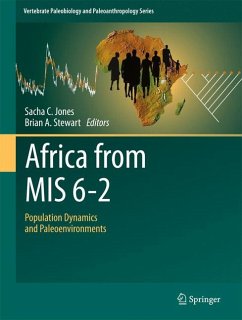Bringing together archaeological, paleoenvironmental, paleontological and genetic data, this book makes a first attempt to reconstruct African population histories from our species' evolution to the Holocene. Africa during Marine Isotope Stages (MIS) 6 to 2 (~190-12,000 years ago) witnessed the biological development and behavioral florescence of our species. Modern human population dynamics, which involved multiple population expansions, dispersals, contractions and extinctions, played a central role in our species' evolutionary trajectory. So far, the demographic processes - modern human population sizes, distributions and movements - that occurred within Africa during this critical period have been consistently under-addressed.
The authors of this volume aim at: (1) examining the impact of this period of extreme climatic changes on human group sizes, movements and distributions throughout Africa; (2) investigating the macro- and micro-evolutionary processes underpinning our species' anatomical and behavioral evolution; and (3) evaluating the state of knowledge of prehistoric population dynamics in Africa so that the continent can benefit from, and eventually contribute to, the increasingly sophisticated theoretical and methodological paleodemographic frameworks developed elsewhere.
The authors of this volume aim at: (1) examining the impact of this period of extreme climatic changes on human group sizes, movements and distributions throughout Africa; (2) investigating the macro- and micro-evolutionary processes underpinning our species' anatomical and behavioral evolution; and (3) evaluating the state of knowledge of prehistoric population dynamics in Africa so that the continent can benefit from, and eventually contribute to, the increasingly sophisticated theoretical and methodological paleodemographic frameworks developed elsewhere.
Dieser Download kann aus rechtlichen Gründen nur mit Rechnungsadresse in A, B, BG, CY, CZ, D, DK, EW, E, FIN, F, GR, HR, H, IRL, I, LT, L, LR, M, NL, PL, P, R, S, SLO, SK ausgeliefert werden.









